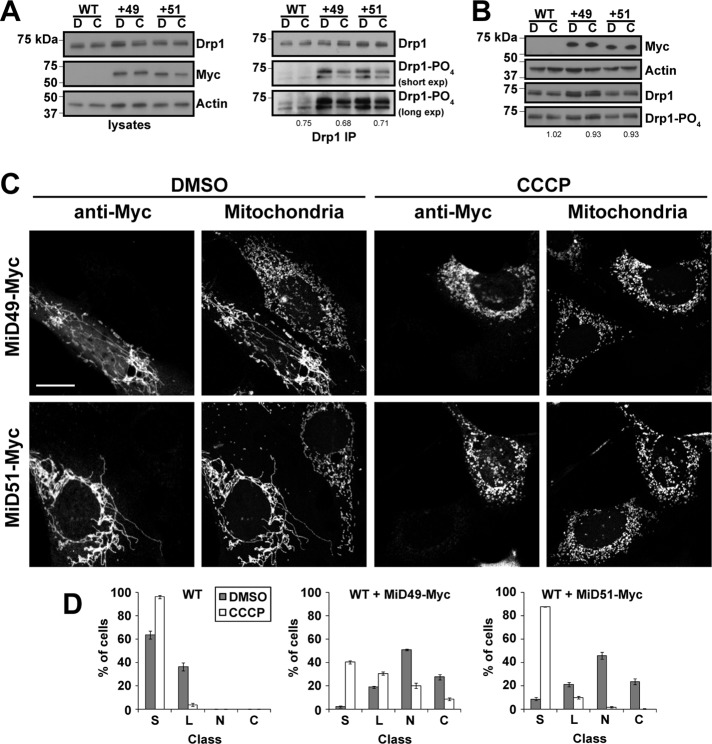FIGURE 5:
Mitochondrial elongation and increased Drp1 S637-PO4 caused by MiD overexpression can be reversed by CCCP. (A) Reduction of Drp1 S637-PO4 levels in CCCP treated cells. Left, lysates from control HeLa cells or HeLa cells expressing MiD49-Myc or MiD51-Myc were analyzed by Western blotting for Drp1. Cells were treated with dimethyl sulfoxide (DMSO; indicated by D) or CCCP (indicated by C). Right, Drp1 S637-PO4 was analyzed as in Figure 4A. Both short and long exposures for the Drp1 S637-PO4 blot are presented. (B) Drp1 S616-PO4 levels do not change in CCCP-treated cells. Lysates from control HeLa cells or HeLa cells expressing MiD49-Myc or MiD51-Myc were analyzed as in Figure 4B. Cells were treated with DMSO (indicated by D) or CCCP (indicated by C). Densitometry was performed on the S616-PO4 and Drp1 S637-PO4 blots and was normalized to the total Drp1 in each lane. Values are presented as ratios of the CCCP/DMSO values for each group. (C) CCCP reverses mitochondrial elongation in MiD-overexpressing MEFs. Cells were transfected with MiD49-Myc or MiD51-Myc and subsequently treated with vehicle (DMSO) or CCCP. MiD-expressing cells were identified by Myc immunofluorescence, and mitochondria were visualized with Tom20 immunofluorescence. In the DMSO-treated samples, note that MiD-Myc expression causes mitochondrial elongation. In the CCCP-treated samples, note that MiD-Myc–expressing cells have fragmented mitochondria. Scale bar, 10 μm. (D) Scoring of mitochondrial network morphologies for MEFs transfected with MiD49-Myc, MiD51-Myc, or empty vector and treated with DMSO or CCCP. The data are from three independent experiments, each with 100 cells scored. Error bars, SEM. C, collapsed; L, long; N, net-like; S, short.

